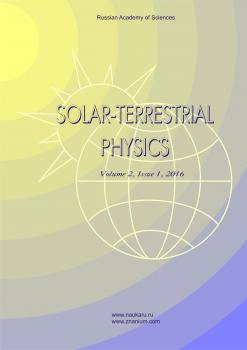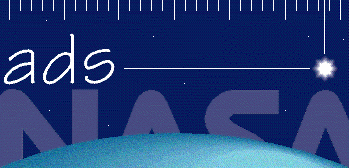Санкт-Петербург, Россия
Санкт-Петербург, Россия
Иркутск, Россия
The dynamics of the intensity of cosmic rays is known to be different on the ascending and descending branches of the 11-year solar cycle, i.e., hysteresis phenomena are observed. Recently, it has been obtained that at shorter intervals on the scale of magnetic storms there are also signs of hysteresis in dependences of cosmic ray cutoff rigidities R (geomagnetic thresholds) on heliosphere and geosphere parameters. R is the rigidity below which a particle flux is cut off due to geomagnetic shielding. In this paper, we have analyzed the dependence of the geomagnetic storm index Dst and the variation of the ΔR thresholds on interplanetary magnetic field (IMF) and solar wind (SW) parameters during the two-step magnetic storm on September 7–8, 2017. We have found hysteresis phenomena in the following paired series: (1) dependences of Dst on SW and IMF parameters, and (2) dependences of ΔR on SW and IMF parameters. We have established that the dependence curves in the storm descending phase (main phase) and ascending phase (recovery phase) do not coincide — hysteresis loops are formed. A specific feature of the storm under study is the second lowering of Dst in the recovery phase. The hysteresis pattern reflects this specific storm dynamics, forming two hysteresis loops in response to the two Dst drops.
cosmic rays, geomagnetic threshold, cosmic ray cutoff rigidities, supersubstorm, interplanetary magnetic field, geomagnetic activity
1. Alexeev I.I., Belenkaya E.S., Kalegaev V.V., Feldstein Y.I., Grafe A. Magnetic storms and magnetotail currents. J. Geophys. Res. 1996, vol. 101, iss. A4, pp. 7737–7748. DOI:https://doi.org/10.1029/95JA03509.
2. Asikainen T., Maliniemi V., Mursula K. Modeling the contributions of ring, tail, and magnetopause currents to the corrected Dst index. J. Geophys. Res.: Space Phys. 2010, vol. 115, iss. A12. DOI:https://doi.org/10.1029/2010JA015774.
3. Atabekov G.I. Teoreticheskie osnovy elektrotekhniki. Lineinye elektricheskie tsepi [Theoretical foundations of electrical engineering. Linear electrical circuits]. Saint Petersburg, Lan Publ., 2009, 592 p. (In Russain).
4. Borovsky J.E., Thomsen M.F., Elphic R.C., Cayton T.E., McComas D.J. The transport of plasma sheet material from the distant tail to geosynchronous orbit. J. Geophys. Res. 1998, vol. 103, iss. A9, pp. 20297–20331. DOI:https://doi.org/10.1029/97JA03144.
5. Cai D.S., Tao W., Yan X., Lembege B., Nishikawa K.I. Bifurcation and hysteresis of the magnetospheric structure with a varying southward IMF: Field topology and global three-dimensional full particle simulations. J. Geophys.Res: Space Phys. 2009, vol. 114, iss. A12210. DOI:https://doi.org/10.1029/2007JA012863.
6. Danilova O.A., Ptitsyna N.G., Tyasto M.I. Hysteresis phenomena in the relationship between the cosmic ray cutoff rigidity and parameters of the magnetosphere during a storm on May 15, 2005. Geomagnetism and Aeronomy. 2023, vol. 63, no. 4, pp. 434–440. DOI:https://doi.org/10.1134/S0016793223600273.
7. Despirak I.V., Kleimenova N.G., Gromova L.I., Gromov S.V., Malysheva L.M. Supersubstorms during Storms of September 7–8, 2017. Geomagnetism and Aeronomy. 2020, vol. 60, no. 3, pp. 292–300. DOI:https://doi.org/10.1134/S0016793220030044.
8. Dorman L.I., Dorman I.V., Iucci N., Parisi M., Villoresi G. Hysteresis between solar activity and cosmic rays during cycle 22: The role of drifts, and the modulation region. Adv. Space Res. 2001, vol. 27, no. 3, pp. 589–594. DOI:https://doi.org/10.1016/S0273-1177(01)00089-8.
9. Dremukhina L.A., Yermolaev Yu.I., Lodkina I.G. Dynamics of interplanetary parameters and geomagnetic indices during magnetic storms induced by different types of solar wind. Geomagnetism and Aeronomy. 2019, vol. 59, iss. 6, pp. 639–650. DOI:https://doi.org/10.1134/s0016793219060069.
10. Ganushkina N.Y., Liemohn M.W., Dubyagin S. Current systems in the Earth’s magnetosphere. Rev. Geophys. 2018, vol. 56, pp. 309–332. DOI:https://doi.org/10.1002/2017RG000590.
11. Gosling J.T. The solar flare myth. JGR. Space Phys. 1993, vol. 98, iss. A11, pp. 18937–18949. DOI:https://doi.org/10.1029/93JA01896.
12. Hajra R, Tsurutani B.T., Lakhina G.S. The complex space weather events of 2017 September. Astrophys. J. 2020, vol. 899, no. 1. DOI:https://doi.org/10.3847/1538-4357/aba2c5.
13. Kalegaev V.V. Dynamic models of the geomagnetic field. Solnechno-zemnaya fizika [Solar-Terr. Phys.]. 2010, iss. 16, pp. 60–69. (In Russian).
14. Kane R.P. Lags, hysteresis, and double peaks between cosmic rays and solar activity. J. Geophys. Res. 2003, vol. 108, iss. A10, p. 1379. DOI:https://doi.org/10.1029/2003JA009995.
15. Kichigin G., Kravtsova M., Sdobnov V. Parameters of current systems in the magnetosphere as derived from observations of cosmic rays during the June 2015 magnetic storm. Solar-Terr. Phys. 2017, vol. 3, no. 3, pp. 15–19. DOI:https://doi.org/10.12737/stp-33201702.
16. Kilpua E.K.J., Balogh A., von Steiger R., Liu Y.D. Geoeffective properties of solar transients and stream interaction regions. Space Sci. Rev. 2017, vol. 212, pp. 1271–1314. DOI:https://doi.org/10.1007/s11214-017-0411-3.
17. Kovalev I.I., Olemskoy S.V., Sdobnov V.E. A proposal to extend the spectrographic global survey method. J. Atmos. Solar-Terr. Phys. 2022, vol. 235, p. 105887. DOI: 10.1016/ j.jastp.2022.105887.
18. Kozyra J.U., Liemohn M.W. Ring current energy input and decay. Space Sci. Rev. 2003, vol. 109 (1-4), pp. 105–131. DOI:https://doi.org/10.1023/B:SPAC.0000007516.10433.ad.
19. Kurazhkovskaya N.A., Kurazhkovskii A.Yu. Hysteresis effect between geomagnetic activity indices (Ap, Dst) and interplanetary medium parameter in solar activity cycles. Solar-Terr. Phys. 2023, vol. 9, iss. 3, pp. 68–76. DOI:https://doi.org/10.12737/stp-93202308.
20. Kurazhkovskaya N.A., Zotov O.D., Klain B.I. Relationship between geomagnetic storm development and the solar wind parameter β. Solar-Terr. Phys. 2021, vol. 7, no. 4, pp. 25–34. DOI:https://doi.org/10.12737/stp-74202104.
21. Mavromichalaki H., Belehaki A., Rafios X. Simulated effects at neutron monitor energies: evidence for a 22-year cosmic ray variation. Astron. Astrophys. 1998, vol. 330, pp. 764–772.
22. McCracken K.G., Rao U.R., Shea M.A. The Trajectories of Cosmic Rays in a High Degree Simulation of the Geomagnetic Field. MIT Tech. Rep. Massachusetts Institute of Technology. Laboratory for Nuclear Science. Cambridge. 1962. 146 p.
23. Obridko V.N., Kanonidi K.D., Mitrofanova T.A., Shelting B.D. Solar activity and geomagnetic disturbances. Geomagnetism and Aeronomy. 2013, vol. 53, iss. 2, pp. 147–156. DOI:https://doi.org/10.1134/S0016793213010143.
24. Ptitsyna N.G., Danilova O.A, Tyasto M.I., Sdobnov V.E. Influence of the solar wind and geomagnetic activity parameters on variations in the cosmic ray cutoff rigidity during strong magnetic storms. Geomagnetism and Aeronomy. 2019, vol. 59, no. 5, pp. 530–538. DOI:https://doi.org/10.1134/S0016793219050098.
25. Ptitsyna N.G., Danilova O.A., Tyasto M.I., Sdobnov V.E. Dynamics of cosmic-ray cutoff rigidity and magnetospheric parameters during different phases of the storm of november 20, 2003. Geomagnetism and Aeronomy. (Engl. Transl.), 2021, vol. 61, no. 4, pp. 169–179. DOI:https://doi.org/10.1134/S0016793221010114.
26. Ptitsyna N.G., Danilova O.A., Tyasto M.I., Sdobnov V.E. Cosmic ray cutoff rigidity governing by solar wind and magnetosphere parameters during the 2017 Sep 6–9 solar-terrestrial event. J. Atmosp. Solar-Terr. Phys. 2023, vol. 246, p. 106067. DOI:https://doi.org/10.1016/j.jastp.2023.106067.
27. Richardson I.G., Cane H.V. Geoeffectiveness (Dst and Kp) of interplanetary coronal mass ejections during 1995–2009 and implications for storm forecasting. Space Weather. 2011, vol. 9, no. 7. DOI:https://doi.org/10.1029/2011sw000670.
28. Safargaleev, V.V., Tereshchenko, P.E. Hertz range pulsations during recovery phase of the magnetic storm on september 7–8, 2017, and relation between their dynamics and changes in the parameters of the interplanetary medium. Geomagnetism and Aeronomy. 2019, vol. 59, no. 3, pp. 281–295. DOI:https://doi.org/10.1134/S0016793219030125.
29. Scolini C., Chane E., Temmer M., Kilpua E.K.J., Dissauer K., Veronig A.M., et al. CME-CME interactions as sources of CME geoeffectiveness: the formation of the complex ejecta and intense geomagnetic storm in 2017 early September. Astrophys. J. Supplement Ser. 2020, vol. 247 (1). DOI:https://doi.org/10.3847/1538-4365/ab6216.
30. Serensen S.V., Kogaev V.P., Shneiderovich R.M. Nesushchaya sposobnost detalei mashin [Load-bearing capacity of machine parts]. Moscow, Mashinostroenie Publ., 1975, 354 p. (In Russian).
31. Shen C., Xu M., Wang Y., Chi Y., Luo B. Why the Shock-ICME Complex Structure Is Important: Learning from the Early 2017 September CMEs. Astrophys. J. 2018, vol. 861, no. 1, pp. 861–960. DOI:https://doi.org/10.3847/1538-4357/aac204.
32. Tsyganenko N.A. A model of the near magnetosphere with a dawn-dusk asymmetry: 1. Mathematical structure. J. Geophys. Res. 2002a, vol. 107, no. A8, p. 1179. DOI:https://doi.org/10.1029/2001 JA000219.
33. Tsyganenko N.A. A model of the near magnetosphere with a dawn-dusk asymmetry: 2. Parametrization and fitting to observation. J. Geophys. Res. 2002b, vol. 107, no. A8, p. 1176. DOI:https://doi.org/10.1029/2001JA000220.
34. Tsyganenko N.A., Singer H.J., Kasper J.C. Storm-time distortion of the inner magnetosphere: How severe can it get? J. Geophys. Res. 2003, vol. 108, no. A5, p. 1209. DOI: 10.1029/ 2002JA009808.
35. Yermolaev Yu.I., Lodkina I.G., Nikolaeva N.S., Yermolaev M.Yu. Statistical study of interplanetary condition effect on geomagnetic storms. Cosmic Res. 2010, vol. 48, iss. 6, pp. 485–500. DOI:https://doi.org/10.1134/S0010952510060018

















